Decadal Climate Change in Ny-Ålesund, Svalbard, A Representative Area of the Arctic
Abstract
:1. Introduction
2. Study Area
3. Data Description
4. Results
4.1. The Decadal Climate Change of Ny-Ålesund
4.2. How Long does the Climate Change of Ny-Ålesund Lag Behind the Global Change?
4.3. Can Ny-Ålesund Represent the Arctic?
5. Discussion
5.1. Why is the Climate of Ny-Ålesund Changes so Rapid?
5.2. Why Climate Change of Ny-Ålesund Lags Global Change by 8–9 Years?
6. Conclusions
Acknowledgments
Author Contributions
Conflicts of Interest
References
- Jeffries, M.O.; Overland, J.E.; Perovich, D.K. The arctic shifts to a new normal. Phys. Today 2013, 66, 35. [Google Scholar] [CrossRef]
- Serreze, M.C.; Francis, J.A. The arctic amplification debate. Clim. Chang. 2006, 76, 241. [Google Scholar] [CrossRef]
- Johannessen, O.M.; Kuzmina, S.I.; Bobylev, L.P.; Miles, M.W. Surface air temperature variability and trends in the arctic: New amplification assessment and regionalisation. Tellus 2016, 68, 28234. [Google Scholar] [CrossRef]
- Polyakov, I.V.; Bekryaev, R.V.; Alekseev, G.V.; Bhatt, U.S.; Colony, R.L.; Johnson, M.A. Variability and trends of air temperature and pressure in the maritime arctic, 1875–2000. J. Clim. 2003, 16, 2067. [Google Scholar] [CrossRef]
- Johannessen, O.M.; Bengtsson, L.; Miles, M.W.; Kuzmina, S.I.; Semenov, V.A.; Alekseev, G.V. Arctic climate change—Observed and modeled temperature and sea ice. Tellus 2004, 56, 328. [Google Scholar] [CrossRef]
- Chylek, P.; Folland, C.K.; Lesins, G.; Dubey, M.K.; Wang, M. Arctic air temperature change amplification and the atlantic multidecadal oscillation. Geophys. Res. Lett. 2009, 36, 61. [Google Scholar] [CrossRef]
- Serreze, M.C.; Barrett, A.P.; Stroeve, J.C.; Kindig, D.N. The emergence of surface-based arctic amplification. Cryosphere. Discuss. 2009, 3, 11. [Google Scholar] [CrossRef]
- Screen, J.A.; Simmonds, I. The central role of diminishing sea ice in recent arctic temperature amplification. Nature 2010, 464, 1334. [Google Scholar] [CrossRef] [PubMed] [Green Version]
- Bengtsson, L.; Semenov, V.A.; Johannessen, O.M. The early twentieth-century warming in the arctic—A possible mechanism. J. Clim. 2004, 17, 4045. [Google Scholar] [CrossRef]
- Hwang, Y.; Frierson, D.M.W.; Kay, J.E. Coupling between arctic feedbacks and changes in poleward energy transport. Geophys. Res. Lett. 2011, 38, 752. [Google Scholar] [CrossRef]
- Overland, J.E.; Wang, M. Large-scale atmospheric circulation changes are associated with the recent loss of arctic sea ice. Tellus 2010, 62, 1. [Google Scholar] [CrossRef]
- Wang, X.; Key, J.R. Arctic surface, cloud, and radiation properties based on the avhrr polar pathfinder dataset. Part ii: Recent trends. J. Clim. 2005, 18, 2575. [Google Scholar] [CrossRef]
- Pithan, F.; Mauritsen, T. Arctic amplification dominated by temperature feedbacks in contemporary climate models. Nat. Geosci. 2014, 7, 181. [Google Scholar] [CrossRef]
- Ding, Q.; Schweiger, A.; L’Heureux, M. Influence of high-latitude atmospheric circulation changes on summertime Arctic sea ice. Nat. Clim. Chang. 2017, 7. [Google Scholar] [CrossRef]
- Duarte, C.M.; Lenton, T.M.; Wadhams, P.; Wassmann, P. Abrupt climate change in the arctic. Nat. Clim. Chang. 2012, 2, 60. [Google Scholar] [CrossRef]
- Schweiger, A.; Lindsay, R.; Zhang, J.; Steele, M.; Stern, H.; Kwok, R. Uncertainty in modeled arctic sea ice volume. J. Geophys. Res. Oceans 2011, 116, 128. [Google Scholar] [CrossRef]
- Overland, J.E.; Wang, M. When will the summer arctic be nearly sea ice free? Geophys. Res. Lett. 2013, 40, 2097. [Google Scholar] [CrossRef]
- Wu, B.; Handorf, D.; Dethloff, K.; Rinke, A.; Hu, A. Winter weather patterns over northern eurasia and arctic sea ice loss. Mon. Weather Rev. 2013, 141, 3786. [Google Scholar] [CrossRef]
- He, J.H.; Wu, F.M.; Qi, L. Decadal/interannual linking between autumn arctic sea ice and following winter eurasian air temperature. Chin. J. Geophys. 2015, 58, 1089. [Google Scholar]
- Mcguire, A.D.; Iii, F.S.C.; Walsh, J.E.; Wirth, C. Integrated regional changes in arctic climate feedbacks: Implications for the global climate system. Annu. Rev. Environ. Resour. 2006, 31, 61. [Google Scholar] [CrossRef]
- Turner, J.; Overland, J.E.; Walsh, J.E. An arctic and antarctic perspective on recent climate change. Int. J. Climatol. 2007, 27, 277. [Google Scholar] [CrossRef]
- Maturilli, M.; Herber, A.; König-Langlo, G. Climatology and time series of surface meteorology in Ny-Ålesund, Svalbard. Earth. Syst. Sci. Data 2012, 5, 1057. [Google Scholar] [CrossRef]
- Nordli, Ø.; Przybylak, R.; Ogilvie, A.E.J.; Isaksen, K. Long-term temperature trends and variability on spitsbergen: The extended svalbard airport temperature series, 1898–2012. Polar Res. 2014, 33, 91. [Google Scholar] [CrossRef]
- Wood, K.R.; Overland, J.E.; Jónsson, T.; Smoliak, B.V. Air temperature variations on the atlantic-arctic boundary since 1802. Geophys. Res. Lett. 2010, 37, 204. [Google Scholar] [CrossRef]
- Rland, E.J.F.; Benestad, R.; Hanssenbauer, I.; Haugen, J.E.; Skaugen, T.E. Temperature and precipitation development at svalbard 1900–2100. Adv. Meteorol. 2011, 2011, 13. [Google Scholar]
- Hanna, E.; Mernild, S.H.; Cappelen, J.; Steffen, K. Recent warming in greenland in a long-term instrumental (1881–2012) climatic context: I. evaluation of surface air temperature records. Environ. Res. Lett. 2012, 7, 189. [Google Scholar] [CrossRef]
- Fyfe, J.C.; Meehl, G.A.; England, M.H.; Mann, M.E.; Santer, B.D.; Flato, G.M. Making sense of the early-2000s warming slowdown. Nat. Clim. Chang. 2016, 6, 224. [Google Scholar] [CrossRef]
- Huang, J.; Zhang, X.; Zhang, Q. Recently amplified arctic warming has contributed to a continual global warming trend. Nat. Clim. Chang. 2017. [Google Scholar] [CrossRef]
- Onarheim, I.H.; Smedsrud, L.H.; Ingvaldsen, R.B.; Nilsen, F. Loss of sea ice during winter north of svalbard. Tellus 2014, 66, 70. [Google Scholar] [CrossRef] [Green Version]
- Overland, J.E. Future arctic climate changes: Adaptation and mitigation time scales. Earths Future 2014, 2, 68. [Google Scholar] [CrossRef]
- Zhang, X.; Walsh, J.E.; Zhang, J.; Bhatt, U.S.; Ikeda, M. Climatology and interannual variability of arctic cyclone activity: 1948–2002. J. Clim. 2004, 17, 2300. [Google Scholar] [CrossRef]
- Sepp, M.; Jaagus, J. Changes in the activity and tracks of arctic cyclones. Clim. Chang. 2011, 105, 577. [Google Scholar] [CrossRef]
- Schauer, U.; Fahrbach, E.; Osterhus, S.; Rohardt, G. Arctic warming through the fram strait: Oceanic heat transport from 3 years of measurements. J. Geophys. Res. 2004, 109, 259. [Google Scholar] [CrossRef]
- Polyakov, I.V.; Alekseev, G.V.; Timokhov, L.A.; Bhatt, U.S.; Colony, R.L.; Simmons, H.L. Variability of the intermediate Atlantic water of the arctic ocean over the last 100 years. J. Clim. 2010, 17, 4485. [Google Scholar] [CrossRef]
- Spielhagen, R.F.; Werner, K.; Sørensen, S.A.; Zamelczyk, K.; Kandiano, E.; Budeus, G. Enhanced modern heat transfer to the arctic by warm Atlantic water. Science 2011, 331, 450. [Google Scholar] [CrossRef] [PubMed] [Green Version]
- Sato, K.; Inoue, J.; Watanabe, M. Influence of the Gulf Stream on the Barents Sea ice retreat and Eurasian coldness during early winter. Environ. Res. Lett. 2014, 9, 084009. [Google Scholar] [CrossRef]
- Walczowski, W.; Piechura, J. Influence of the west Spitsbergen current on the local climate. Int. J. Climatol. 2011, 31, 1088. [Google Scholar] [CrossRef]
- Ruggieri, P.; Buizza, R.; Visconti, G. On the link between Barents-Kara sea-ice variability and European blocking. J. Geophys. Res. Atmos. 2016, 121, 5664. [Google Scholar] [CrossRef]
- Francis, J.A.; Hunter, E. Changes in the fabric of the arctic’s greenhouse blanket. Environ. Res. Lett. 2007, 2, 045011. [Google Scholar] [CrossRef]
- Rinke, A.; Melsheimer, C.; Dethloff, K.; Heygster, G. Arctic total water vapor: Comparison of regional climate simulations with observations, and simulated decadal trends. J. Hydrometeorol. 2009, 10, 113. [Google Scholar] [CrossRef]
- Serreze, M.C.; Barrett, A.P.; Stroeve, J. Recent changes in tropospheric water vapor over the arctic as assessed from radiosondes and atmospheric reanalyses. J. Geophys. Res. 2012, 117, 10104. [Google Scholar] [CrossRef]
- Maturilli, M.; Kayser, M. Arctic warming, moisture increase and circulation changes observed in the Ny-Ålesund homogenized radiosonde record. Theor. Appl. Climatol. 2016, 130, 1. [Google Scholar] [CrossRef]
- Solomon, S.; Rosenlof, K.H.; Portmann, R.W.; Daniel, J.S.; Davis, S.M.; Sanford, T.J. Contributions of stratospheric water vapor to decadal changes in the rate of global warming. Science 2010, 327, 1219. [Google Scholar] [CrossRef] [PubMed]
- Solomon, S.; Daniel, J.S.; Rd, N.R.; Vernier, J.P.; Dutton, E.G.; Thomason, L.W. The persistently variable “background” stratospheric aerosol layer and global climate change. Science 2011, 333, 866. [Google Scholar] [CrossRef] [PubMed]
- Feng, C.; Wu, B.Y. Enhancement of Winter Arctic Warming by the Siberian High over the Past decade. Atmos. Ocean. Sci. Lett. 2015, 8, 257. [Google Scholar]
- Kosaka, Y.; Xie, S.P. Recent global-warming hiatus tied to equatorial pacific surface cooling. Nature 2013, 501, 403. [Google Scholar] [CrossRef] [PubMed]
- Meehl, G.A.; Arblaster, J.M.; Fasullo, J.T.; Hu, A.; Trenberth, K.E. Model-based evidence of deep-ocean heat uptake during surface-temperature hiatus periods. Nat. Clim. Chang. 2011, 1, 360. [Google Scholar] [CrossRef]
- England, M.H.; Mcgregor, S.; Spence, P.; Meehl, G.A.; Timmermann, A.; Cai, W. Recent intensification of wind-driven circulation in the pacific and the ongoing warming hiatus. Nat. Clim. Chang. 2014, 4, 222. [Google Scholar] [CrossRef]
- Chen, X.; Tung, K.K. Climate varying planetary heat sink led to global-warming slowdown and acceleration. Science 2014, 345, 897. [Google Scholar] [CrossRef] [PubMed]
- Langehaug, H.R.; Matei, D.; Eldevik, T.; Lohmann, K.; Gao, Y. On model differences and skill in predicting sea surface temperature in the Nordic and Barents seas. Clim. Dyn. 2017, 48, 913. [Google Scholar] [CrossRef]
- Årthun, M.; Eldevik, T. On anomalous ocean heat transport toward the arctic and associated climate predictability. J. Clim. 2015, 29, 151111130840000. [Google Scholar] [CrossRef]
- An, W.; Hou, S.; Hu, Y.; Wu, S. Delayed warming hiatus over the Tibetan plateau. Earth Space Sci. 2017, 4, 128. [Google Scholar] [CrossRef]
- Turner, J.; Ju, H.; White, I.; King, J.C.; Phillips, T.; Hosking, S.; Bracegirdle, T.; Marshall, G.J.; Mulvaney, R.; Deb, P. Absence of 21st century warming on Antarctic Peninsula consistent with natural variability. Nature 2016, 535, 411. [Google Scholar] [CrossRef] [PubMed]

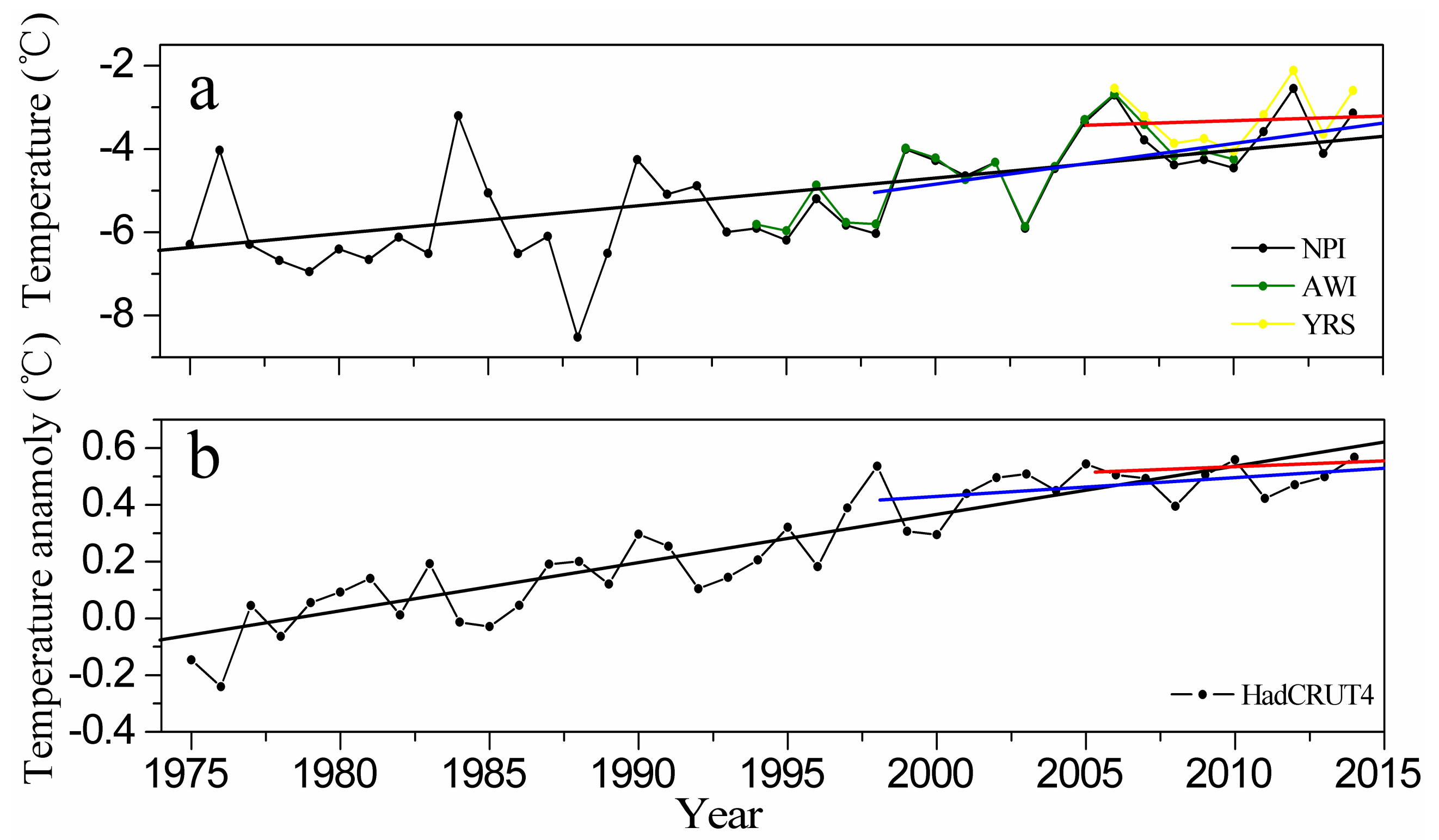
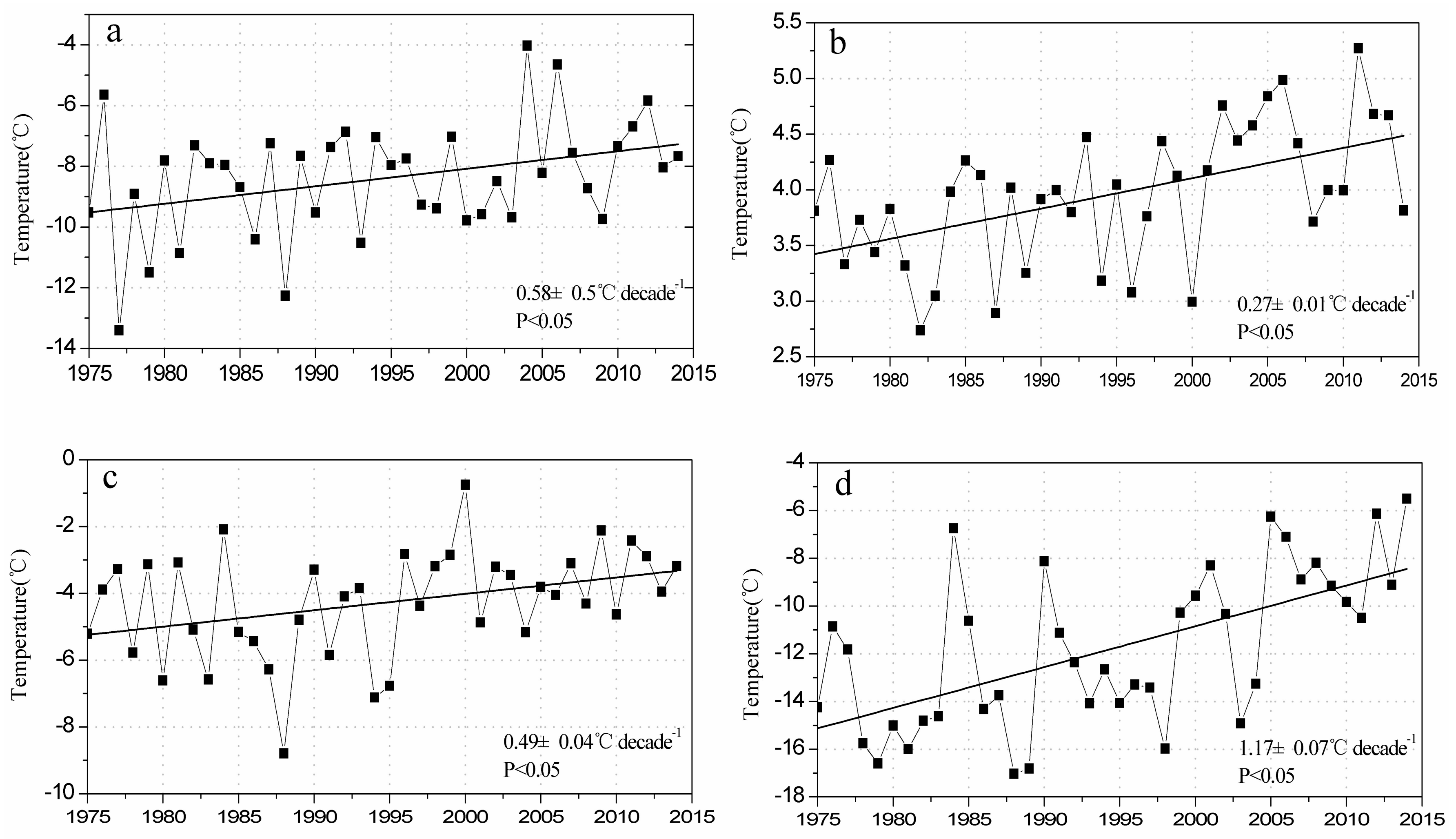
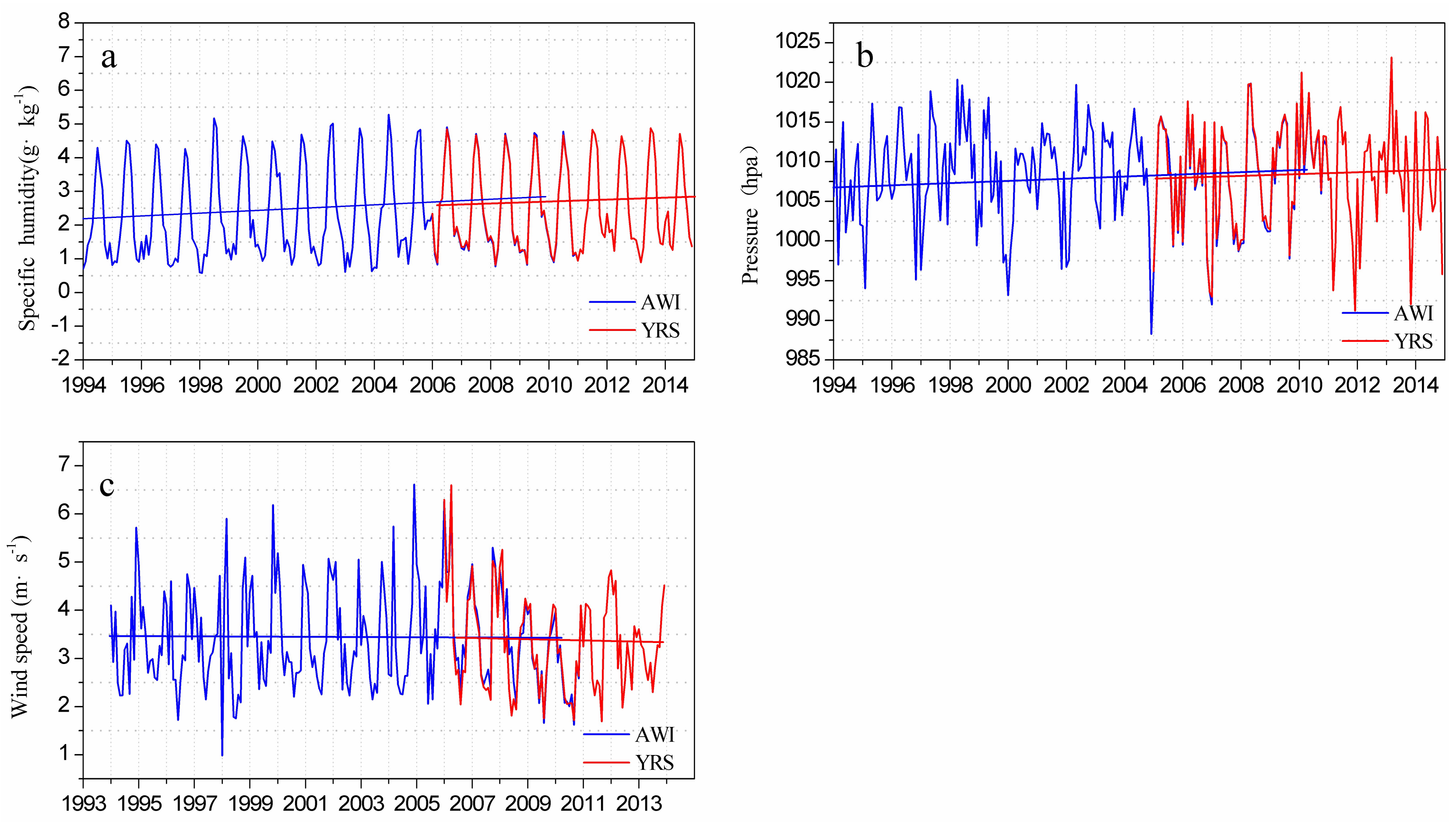

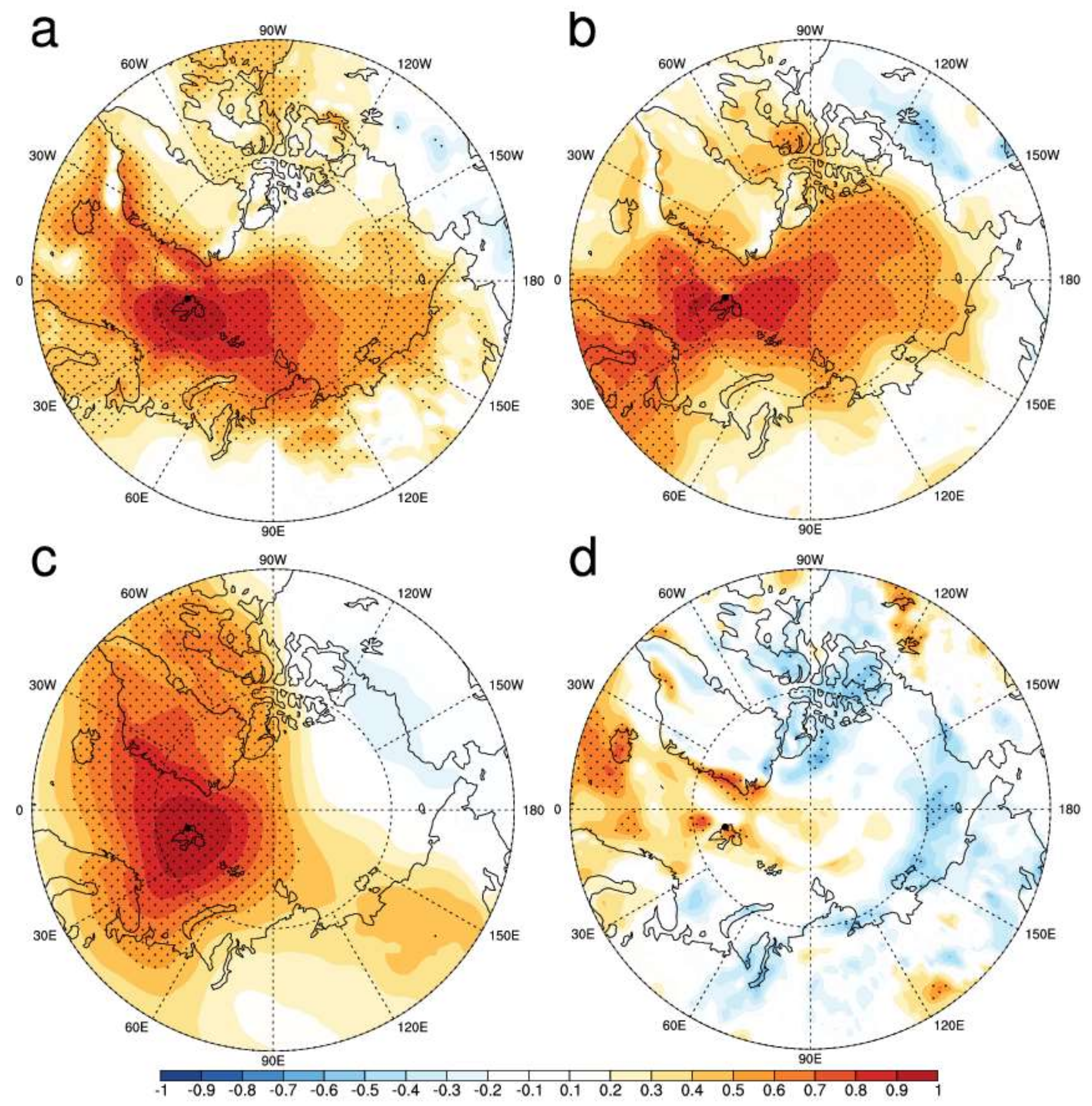
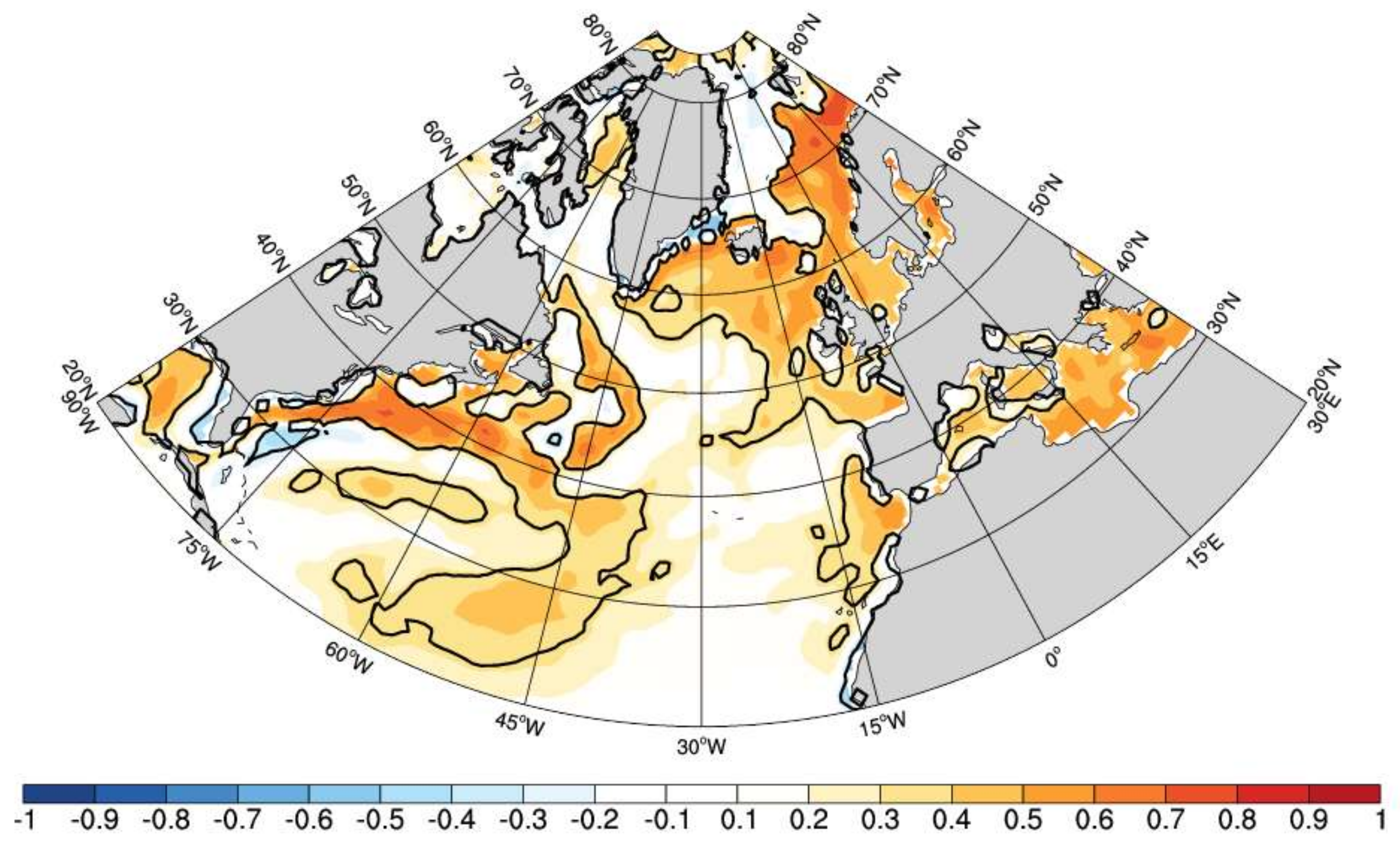
| Element | Sensor Type | Measurement Range | Accuracy |
|---|---|---|---|
| Air temperature, °C | Vaisala HMP155 | −80–60 °C | ±0.2 °C |
| Relative humidity, % | Vaisala HMP155 | 0–100% | ±1.7% |
| Air pressure, hPa | Vaisala PTB220 | 500–1100 hPa | ±0.3 hPa |
| Wind speed, m·s−1 | XFY3-1 | 0–90 m·s−1 | ±0.5 m·s−1 |
| Wind direction, ° | XFY3-1 | 0–360° | ±5° |
© 2018 by the authors. Licensee MDPI, Basel, Switzerland. This article is an open access article distributed under the terms and conditions of the Creative Commons Attribution (CC BY) license (http://creativecommons.org/licenses/by/4.0/).
Share and Cite
Ding, M.; Wang, S.; Sun, W. Decadal Climate Change in Ny-Ålesund, Svalbard, A Representative Area of the Arctic. Condens. Matter 2018, 3, 12. https://doi.org/10.3390/condmat3020012
Ding M, Wang S, Sun W. Decadal Climate Change in Ny-Ålesund, Svalbard, A Representative Area of the Arctic. Condensed Matter. 2018; 3(2):12. https://doi.org/10.3390/condmat3020012
Chicago/Turabian StyleDing, Minghu, Shujie Wang, and Weijun Sun. 2018. "Decadal Climate Change in Ny-Ålesund, Svalbard, A Representative Area of the Arctic" Condensed Matter 3, no. 2: 12. https://doi.org/10.3390/condmat3020012
APA StyleDing, M., Wang, S., & Sun, W. (2018). Decadal Climate Change in Ny-Ålesund, Svalbard, A Representative Area of the Arctic. Condensed Matter, 3(2), 12. https://doi.org/10.3390/condmat3020012




